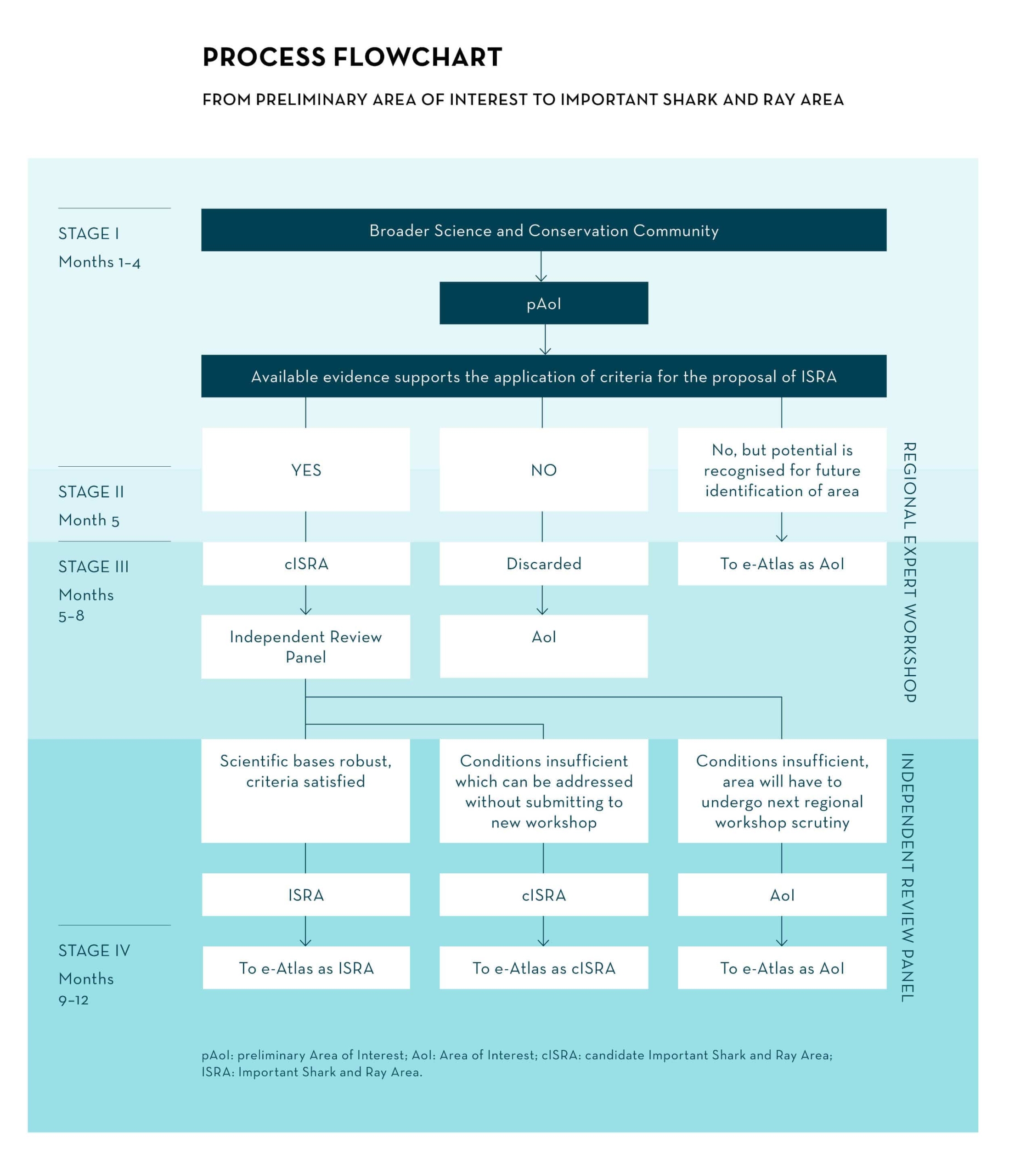IDENTIFICATION PROCESS



IDENTIFICATION PROCESS
Important Shark and Ray Areas (ISRA)
IDENTIFICATION PROCESS
An expert driven process involving four stages
The global identification of Important Shark and Ray Areas (ISRAs) is undertaken on a region-by-region basis. Within each region, and depending on its size and available resources, the process can be expected to take 12 months to complete.
Throughout the identification process, the IUCN SSC Shark Specialist Group engages with representatives from each region through its Regional Vice-Chairs to ensure relevant experts are identified that have the experience and skills needed to propose ISRAs, collate and evaluate available data, and apply the evidence against the ISRA Criteria.
The four-step process to identify, review, and accept or reject ISRA nominations includes:
- Nominations of Preliminary Area of Interest (pAoI) and workshop preparation;
- Development of candidate ISRAs (cISRAs) at a regional expert workshop;
- Review of cISRAs process and ISRA classification; and
- ISRA delivery, reporting, and publication.
By examining region after region (possibly two per year depending on the availability of funding and personnel) for ISRAs identification, eventually the process will come full circle, bringing up the eventuality of examining regions for the second time. Ideally, such replication will take place every 10 years. In this time, both environmental changes (e.g., warming, species ranges, and status) and knowledge progress are likely to be significant, which makes the revision of a regional ISRA configuration desirable if not necessary.

See Important Shark and Ray Area Implementation Strategy for further details on how the identification process is completed.

